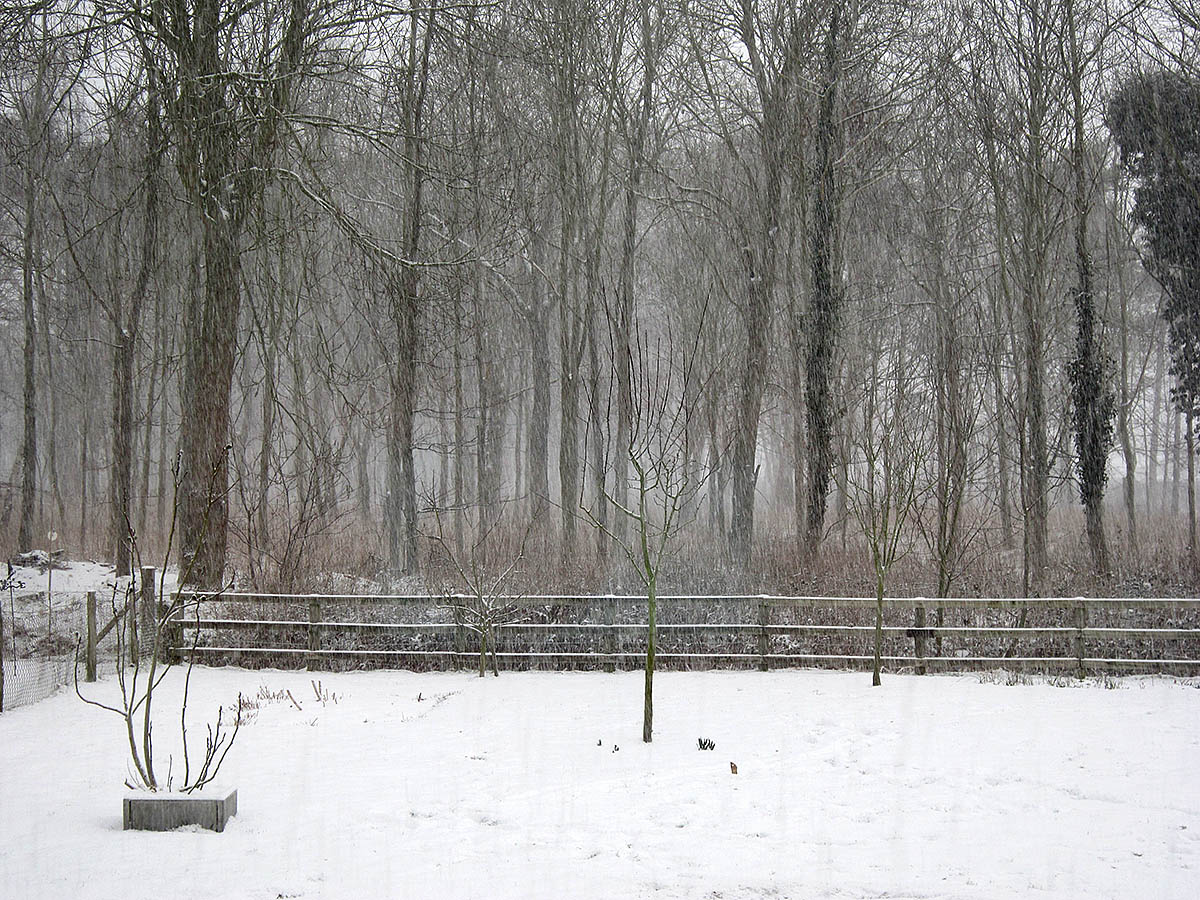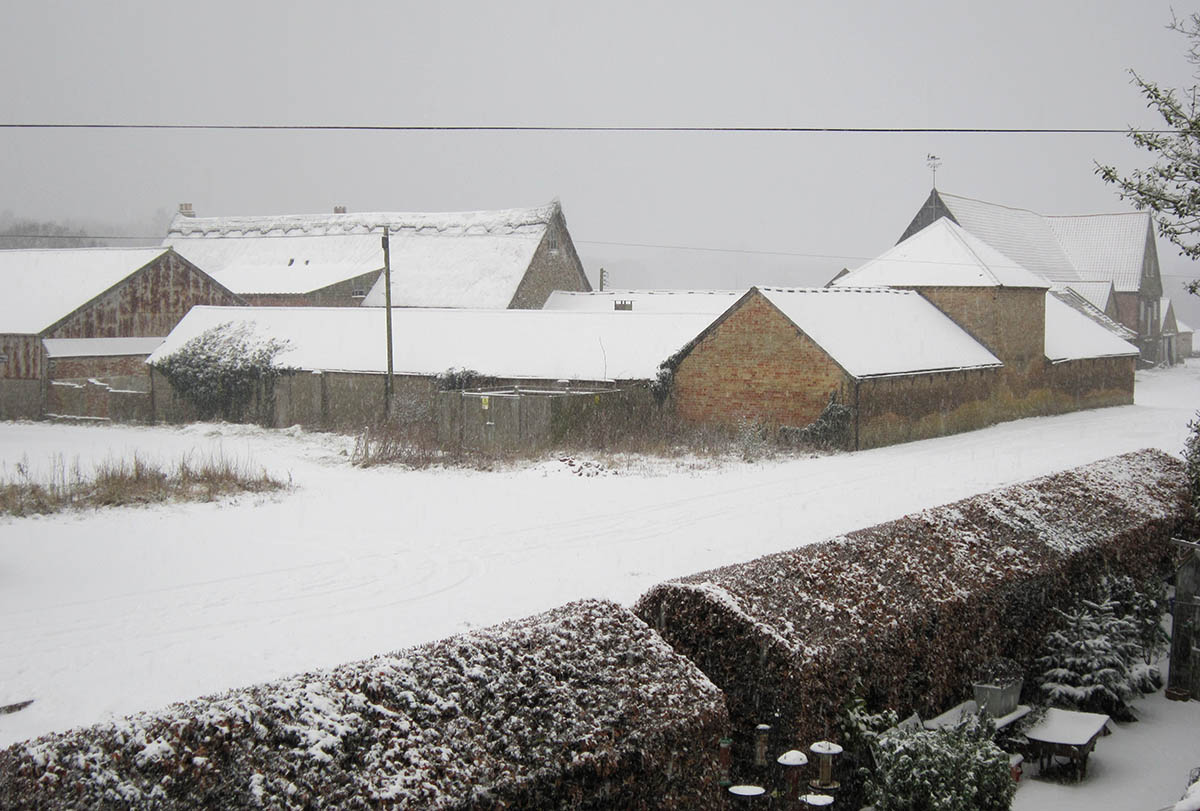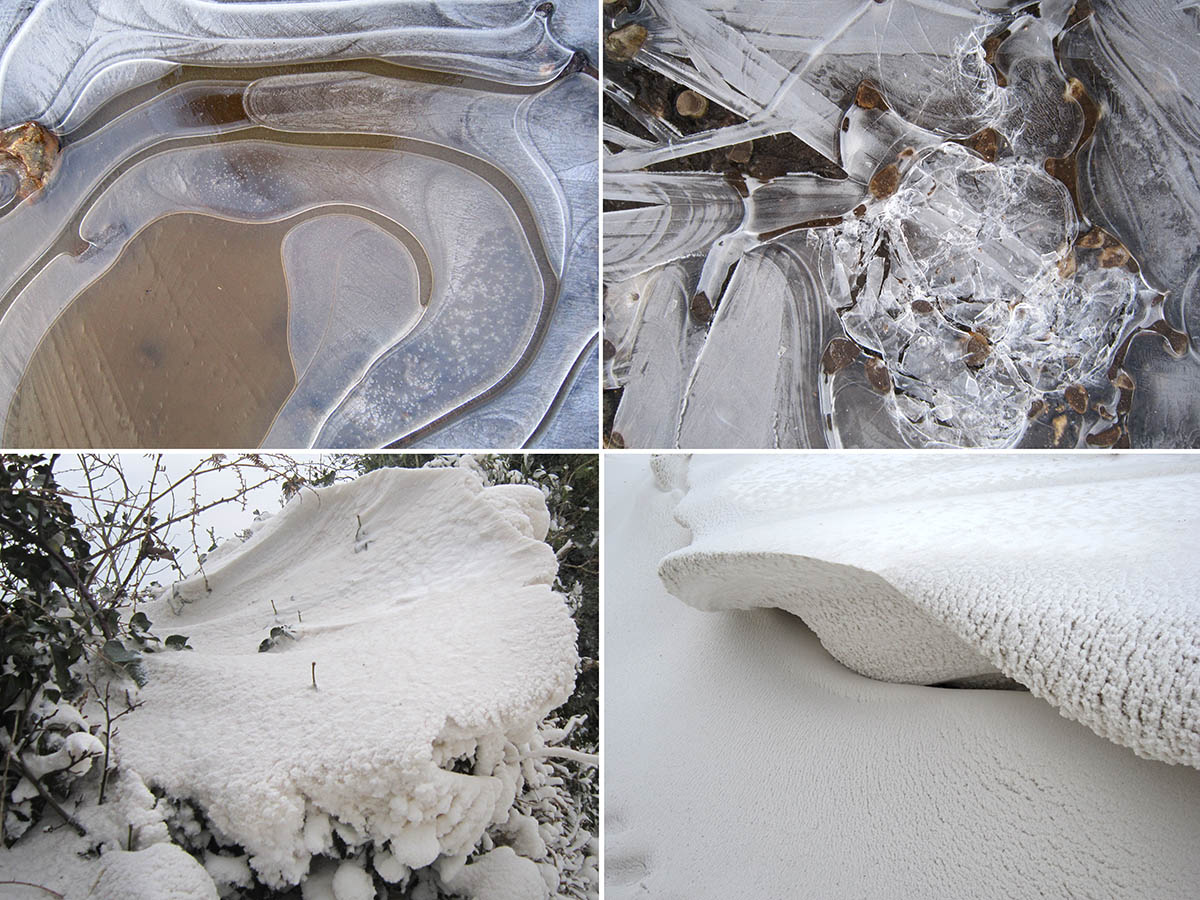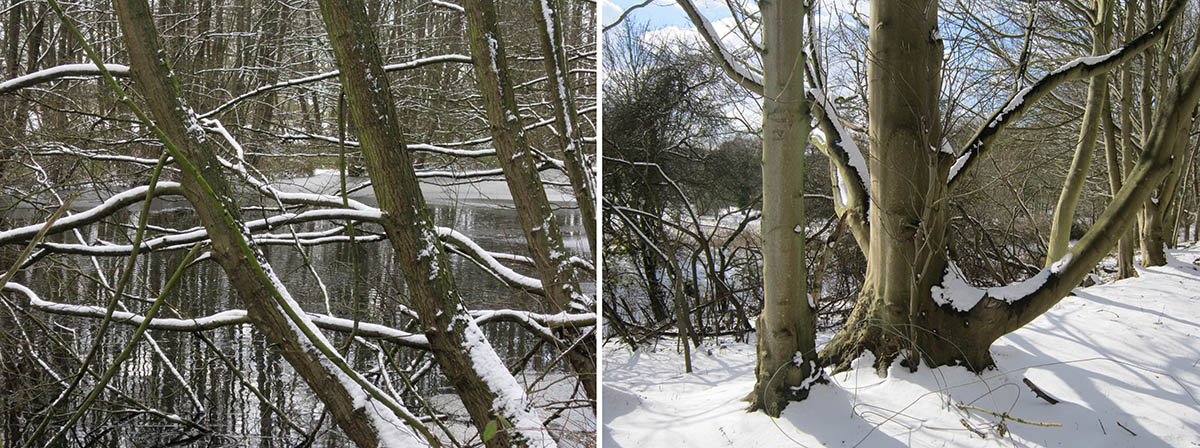Expecting Snow

Predicted snow dictates a sudden schedule change. The washing must get washed, the dog walked, the kindling chopped and the greenhouse closed, just in case we leave it all too late and find ourselves caught out, unprepared for snow.

When we are told that it will snow we go, repeatedly, to the window that looks towards the north-eastern horizon, the direction of the snow’s approach. Subconsciously we take note of omens, the gathering of dark, heavier‑looking clouds or the breeze’s quickening as it passes through the ash’s bare black branches.
We drink far too much coffee, consider soup-making, hunt out boots, almost succumb to the temptation to panic buy for the freezer, then decide not to go out in case we cannot get back in. Involuntarily we find ourselves rehearsing ‘what if’ questions. We ask, where have we put the de-icer, the scraper, the torches, candles, matches and salt? We make complicated contingency plans, considering early departures, or late departures, complete cancellations, over-reacting to a weather event that has not yet occurred.

We want to be convinced, to depend on the definite arrival of snow. Prolonged uncertainty disturbs the calm of our internal weather. We cannot insulate ourselves from worry, thinking that the pile of coals in the shed has inexplicably diminished and is, perhaps, far too small to last through snow. To compensate, we fill up baskets and crates and boxes with sticks and logs, lay far larger fires than we should. Surreptitiously we turn up the central heating setting, then turn it back again because, so far, nothing has actually happened.

Before a single flake touches the ground, we incline to self-contradiction, first insisting that we have grown unused to snow, then complaining that there has been far too much of it in the last few winters. Caught in its premonitory spell, we realise how fervently we both want, and yet do not want the approaching snow. Like over-excited children, we can barely wait to rediscover the world made exquisitely strange by snow’s nocturnal visitation. We are eager for the novelty of transformation - the trees newly re-pencilled in white. We want to see the streamlined lobes of wind-sculpted roadside drifts; to test the strength of milk-white puddles’ frozen lids. Even though we know that all of this will anticlimax in lingering filthy slush, we will sit up late, keeping vigil for the very first flakes.

Birds attract our attention, their presence seemingly more obvious during this phase of expectation. Coming in flurries, they feed more and more urgently as the morning passes. We remark on little things - how the frost bites our lips, chaps our hands. Preoccupied, we pay close attention to tiny blood-raw splits that the cold opens at our fingertips. Even these are possible prognostications, which we take to be indicative of snow.
Anticipating power cuts, we attempt to get ahead, but the distraction of imminent snow means that we can only work fitfully at our screens. More apprehensive by the hour, we look up, look down, again and again shifting focus between the lit page and the darkening clouds. Repeatedly we interrupt our work, anxiously check the net for updates. We count proliferating minus signs, watch snowflake symbols drifting steadily downwards across the map of the county north of us.

Unsatisfied by live streaming of the snow’s advance, we succumb to restlessness, frittering our final snow-free daylight hours away, stopping and starting whatever we attempt to do. On screen we watch virtual snow clouds shouldering the coast, but still question which precedes which. Does the chart really show the impending weather, or could the weather out there already be in advance of the chart? Via the satellite’s cold disinterested eye, we watch Norfolk whitening, going right under. County boundaries are no obstacle to the snow storm’s advance.
At dusk, deer come. They slip into the darkening wood, a shadowy congregation gathering one by one amongst the huddled trees. They would not otherwise come so close we say: they know. Killing time, we stare into the wood until we can no longer distinguish between deer antlers and antlered trees.

Late, very late, they come, the first feathery flakes - light as a caress at our black window pane. Then in myriads they float and fall. The lawn, the roofs, the paths submit to snow at last. Now, neither we nor the watching satellites can see the sheltering deer, the obliterated trees. Dispassionate, the snow attends throughout the night, blanketing all in white.
Kim Crowder, February 2019.